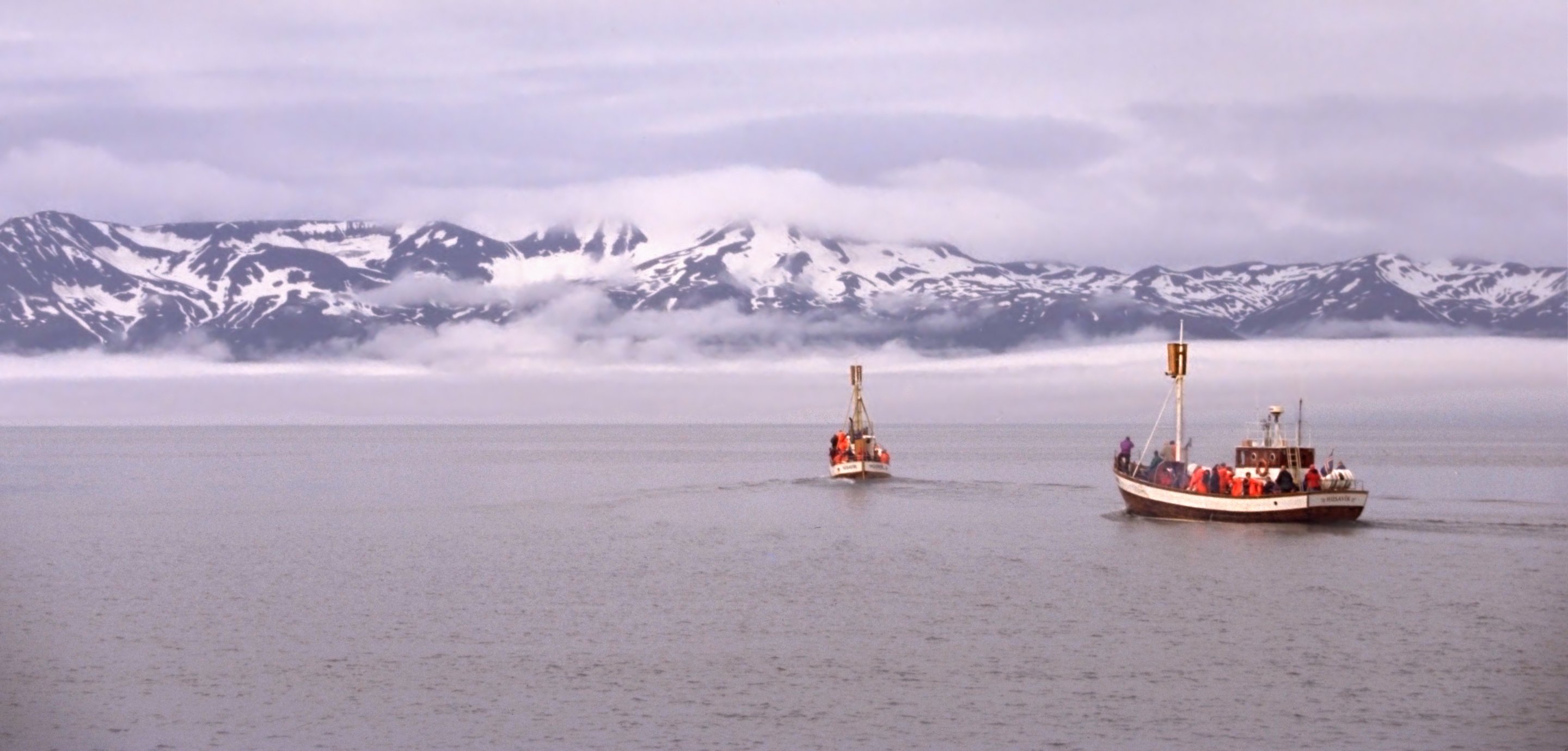Skjálfandi Location on:
[Wikipedia]
[Google]
[Amazon]
Skjálfandi (; also known as Skjálfandaflói ) is a bay in northern  The only town in Skjálfandi Bay is
The only town in Skjálfandi Bay is  There are two islands in Skjálfandi. The larger one is Flatey (''flat island''). It is situated close to the opposite side of the bay from
There are two islands in Skjálfandi. The larger one is Flatey (''flat island''). It is situated close to the opposite side of the bay from
Photo of the port of Húsavík with the bay
Fjords of Iceland North Iceland Viking Age populated places {{iceland-fjord-stub
Iceland
Iceland ( is, Ísland; ) is a Nordic island country in the North Atlantic Ocean and in the Arctic Ocean. Iceland is the most sparsely populated country in Europe. Iceland's capital and largest city is Reykjavík, which (along with its s ...
, with some of the characteristics of a fjord
In physical geography, a fjord or fiord () is a long, narrow inlet with steep sides or cliffs, created by a glacier. Fjords exist on the coasts of Alaska, Antarctica, British Columbia, Chile, Denmark, Förden and East Jutland Fjorde, Germany, ...
. The Icelandic word ''Skjálfandi'' literally translates to ''trembling'' which may refer to earthquake
An earthquake (also known as a quake, tremor or temblor) is the shaking of the surface of the Earth resulting from a sudden release of energy in the Earth's lithosphere that creates seismic waves. Earthquakes can range in intensity, fr ...
s in the area.
The bay, originally created by glacial activity, has two major rivers flowing into it: Skjálfandafljót, which is a glacier river, and Laxá, which is a freshwater river. The river Laxá ("Salmon River") is famous for its salmon and part of the river is protected by the Ramsar Convention
The Ramsar Convention on Wetlands of International Importance Especially as Waterfowl Habitat is an international treaty for the conservation and sustainable use of Ramsar site, Ramsar sites (wetlands). It is also known as the Convention on W ...
.
 The only town in Skjálfandi Bay is
The only town in Skjálfandi Bay is Húsavík
Húsavík () is a town in Norðurþing municipality on the north coast of Iceland on the shores of Skjálfandi bay with 2,307 inhabitants. The most famous landmark of the town is the wooden church Húsavíkurkirkja, built in 1907. Húsavík i ...
, facing the snow-covered Víknafjöll and Kinnarfjöll mountain ranges on the other side of the bay. The highest point reaches around .
The bay is known for its many different whale
Whales are a widely distributed and diverse group of fully aquatic placental marine mammals. As an informal and colloquial grouping, they correspond to large members of the infraorder Cetacea, i.e. all cetaceans apart from dolphins and ...
, dolphin
A dolphin is an aquatic mammal within the infraorder Cetacea. Dolphin species belong to the families Delphinidae (the oceanic dolphins), Platanistidae (the Indian river dolphins), Iniidae (the New World river dolphins), Pontoporiidae (the ...
and bird species.
 There are two islands in Skjálfandi. The larger one is Flatey (''flat island''). It is situated close to the opposite side of the bay from
There are two islands in Skjálfandi. The larger one is Flatey (''flat island''). It is situated close to the opposite side of the bay from Húsavík
Húsavík () is a town in Norðurþing municipality on the north coast of Iceland on the shores of Skjálfandi bay with 2,307 inhabitants. The most famous landmark of the town is the wooden church Húsavíkurkirkja, built in 1907. Húsavík i ...
. There is a village on the island, no longer inhabited, composed of a few houses, a school and a church. There is no ferry serving Flatey. Skjálfandi's smaller island is called Lundey. Its name means ''island of the puffins'' because of the great colony of puffins living on its cliffs during the summer. Lundey is located north from Húsavík.
Garðar Svavarsson
Garðarr Svavarsson (Old Norse: ; Modern Icelandic: ; Modern Swedish: ) was a Swede who briefly resided in Iceland, according to the Sagas. He is said to be the second Scandinavian to reach the island of Iceland after Naddod. He and his family ...
was one of the first Scandinavians to settle in Iceland, doing so around 860 CE. He built a house in Skjálfandi, but spent only the following winter months there before leaving Iceland. His slave Náttfari Náttfari (Old Norse: ; Modern Icelandic: ; c.835) was a crew member who escaped his master, Garðar Svavarsson, and may have become the first permanent resident of Iceland in the 9th century. The earliest account of his story is found in the 11th ...
was left behind and continued to live on the farm but was chased away from it later by a Norse settler, forcing Náttfari to build a new farm on poorer land in Náttfaravík (; Old Norse
Old Norse, Old Nordic, or Old Scandinavian, is a stage of development of North Germanic dialects before their final divergence into separate Nordic languages. Old Norse was spoken by inhabitants of Scandinavia and their overseas settlemen ...
: ) by Skjálfandi.
Panorama
See also
* Fjords of IcelandReferences
External links
Photo of the port of Húsavík with the bay
Fjords of Iceland North Iceland Viking Age populated places {{iceland-fjord-stub